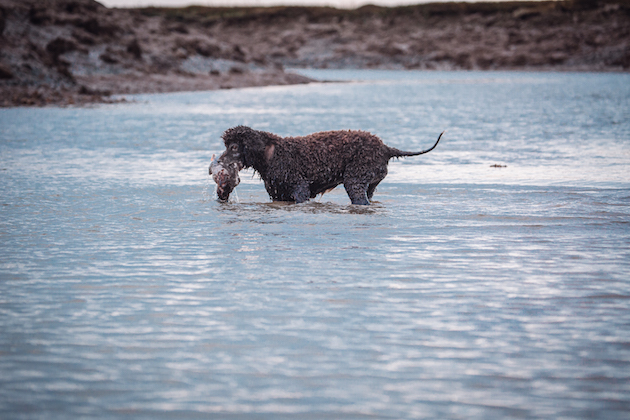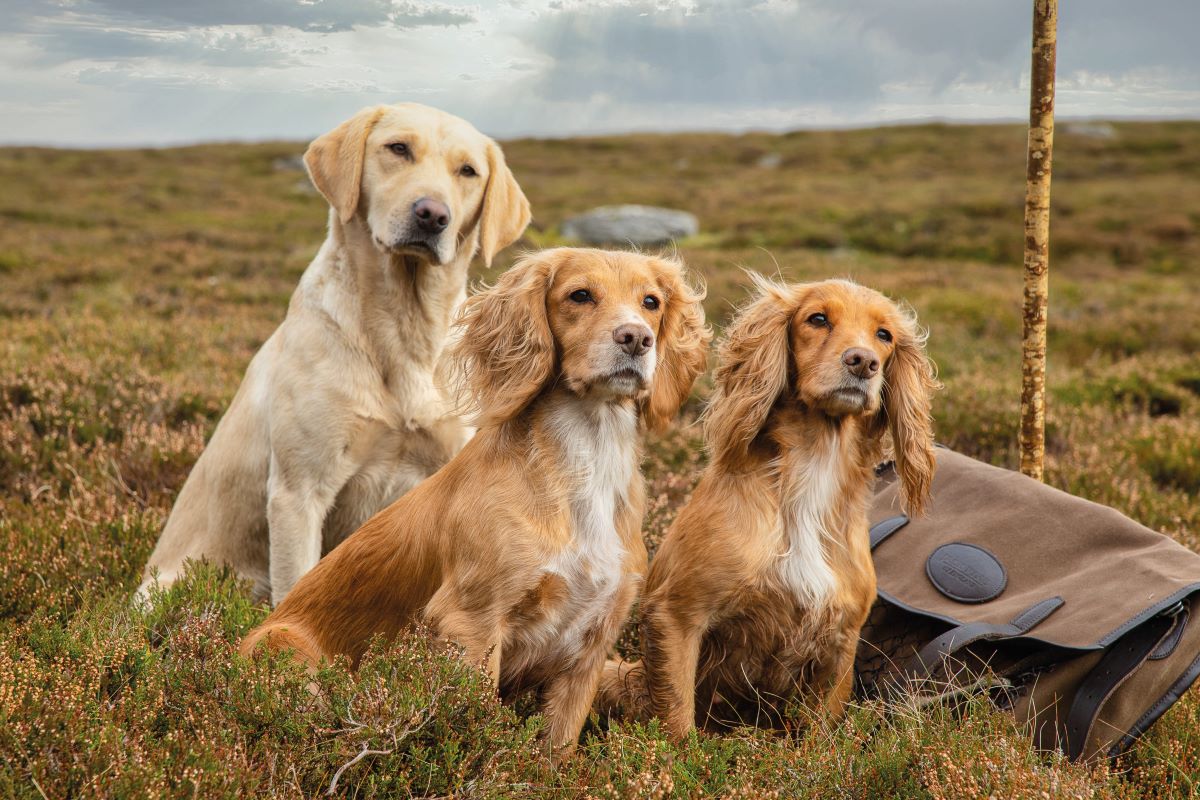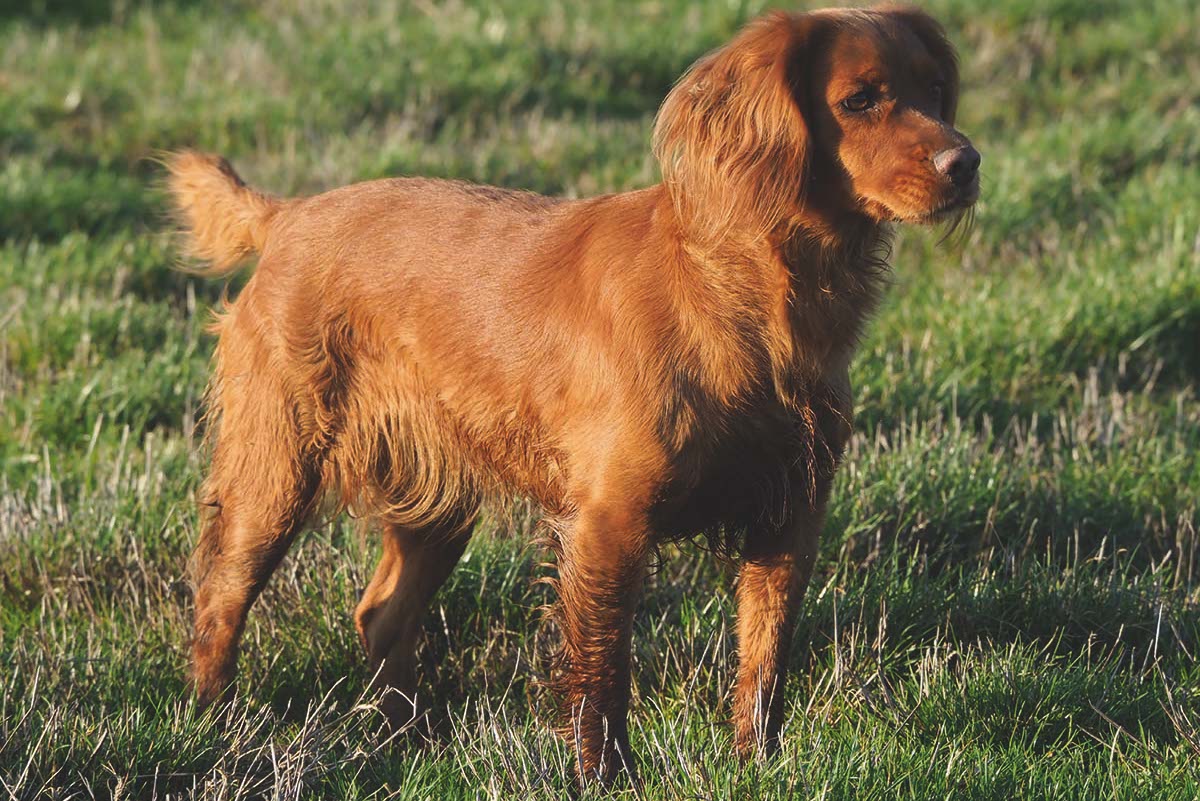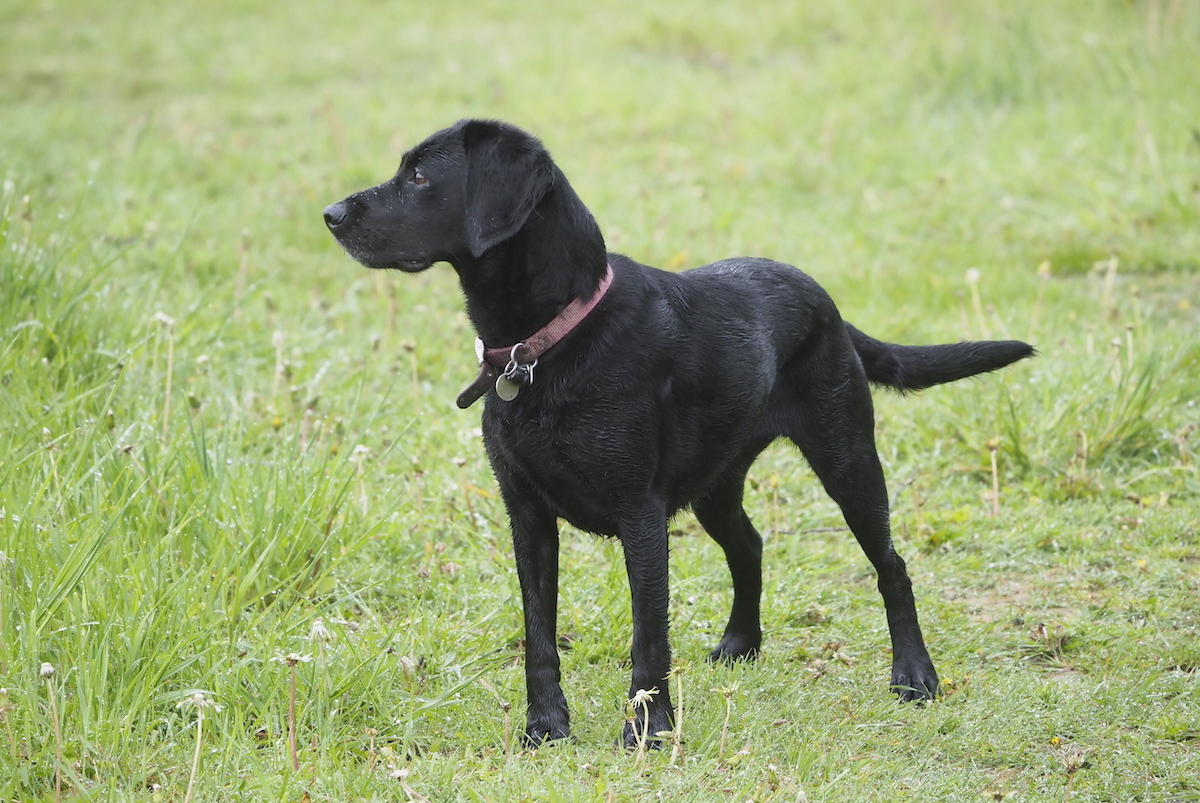The Irish water spaniel
There's not many of them about

Bridie completed a smart retrieve from the far side of the creek
Hunt, point and retrieve (HPR) dogs are increasing in popularity but it’s unusual to see an Irish water spaniel in the field, although it could lay claim to being the only HPR native to these islands. These spaniels are not only keen hunters, point before flushing and are good retrievers from both land and water. (Read more on unusual gundog breeds.)
The Irish water spaniel – an undoubted talent
The Irish water spaniel has always been a rarity in the shooting field, but it is a dog with undoubted talent.
It is, with the curlycoated retriever, a rare survivor of a number of curlycoated water dogs once to be found in the British Isles. The most important of these were, arguably, the Tweed water spaniel, an ancestor of the golden retriever, and the English water spaniel, a dog whose genes can still be found in the English springer. Many believe that all the water dogs, including the Spanish, Portuguese, lagotto Romagnolo and pudelpointer, are descendants of the standard poodle, a breed with a considerable and often forgotten sporting history.
While both the Tweed and English water spaniels faded into extinction in Victorian Britain, the Irish water spaniel survived in Ireland largely due to the efforts of one Justin McCarthy, whose stud dog Boatswain is the undisputed founding sire of the breed. Unfortunately McCarthy failed to keep records, so we will never know what dogs he crossed Boatswain with to establish the Irish water spaniel as we know it today.

Characteristics
- These spaniels are slow to mature and require patient, kind, firm and careful training, but are capable of giving many years of honest and reliable work.
- The breed comes in just one colour — rich, dark liver.
- It is the biggest of the spaniels: the breed standard requires a height of 21in to 23in for dogs, slightly less for bitches.
- Its most distinctive feature is its curly coat; this has a natural oiliness and needs frequent grooming or it will become matted.
- The face has short hairs, but on the top of the head there is always a foppish topknot that helps give the breed its comic character.
- It has a short rat-like tail most unlike that of the curlycoated retriever, which is longer, broader and furred.

Irish water spaniel – the biggest of the spaniels
Spaniel or retriever?
The Irish water spaniel’s biggest problem is its identity: is it a spaniel or a retriever? Confusingly, the Kennel Club classifies it as a spaniel in the show ring and a retriever when working. In competition it is up against labradors, golden retrievers and flatcoats, which explains why there has never been an Irish water spaniel field trial champion.

The distinctive top knot on the Irish water spaniel
Finding a puppy
The Irish water spaniel comes into its own rough shooting, wildfowling or working in the beating line. It can also be a competent picking-up dog. As its name suggests, it really does like water and all those I have seen have been powerful swimmers. It is a dog that is ideally suited to working the bogs of its native Ireland.
Finding a puppy from a working kennel is strongly recommended: the Sporting Irish Water Spaniel Club (SIWSC) will help here, but it is worth remembering that only a few litters are born in the UK each year.
It can be difficult to tell these spaniels apart individually. Owners identify their dogs when dry, but after a swim it became much more difficult.
The SIWSC strives to retain the breed’s working ability and runs training days, tests and trials throughout the year. Unfortunately, this is probably the last breed anyone considers when looking for a retriever, or when seeking a spaniel. However, it is a handsome dog with genuine appeal.








